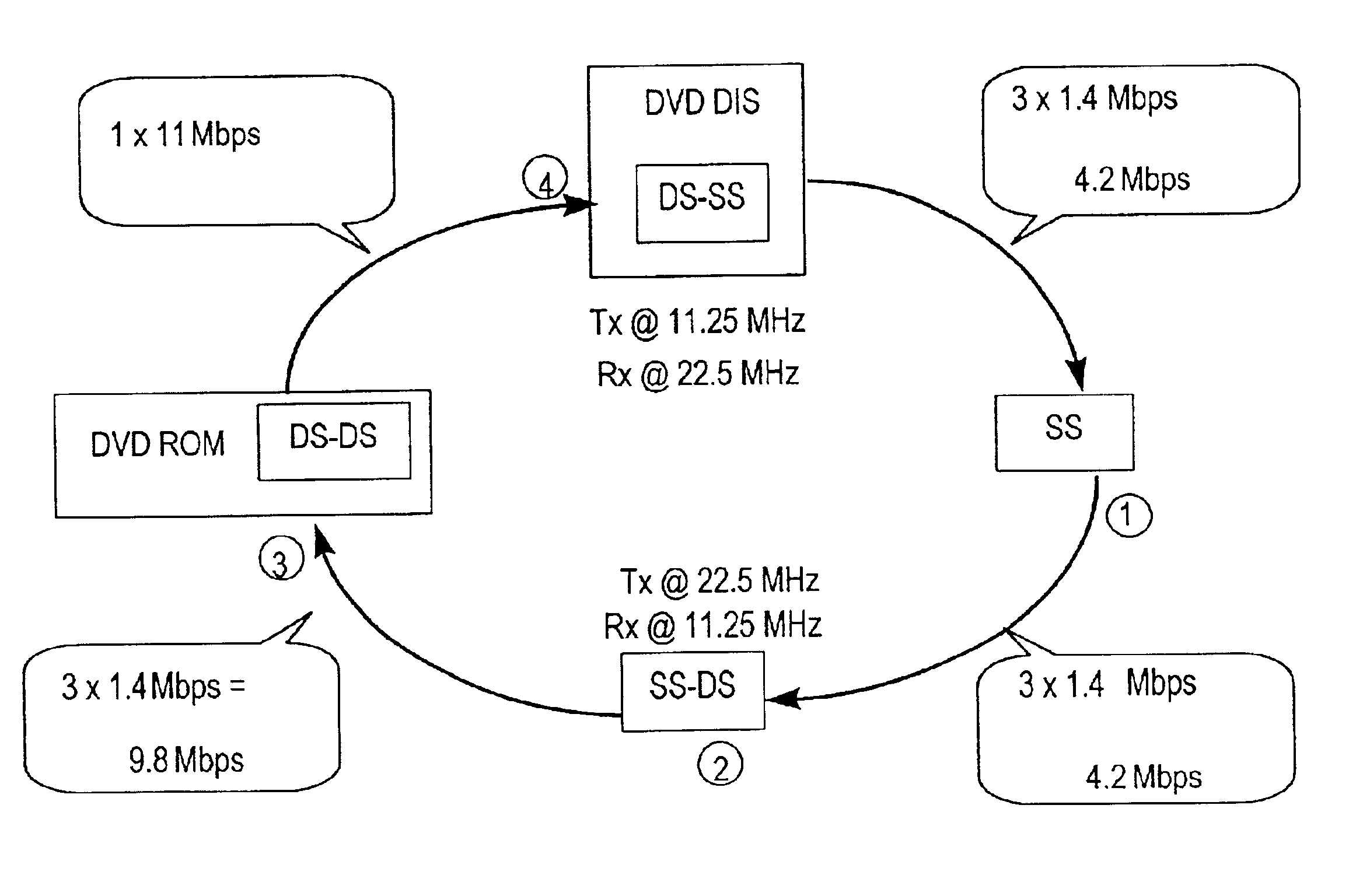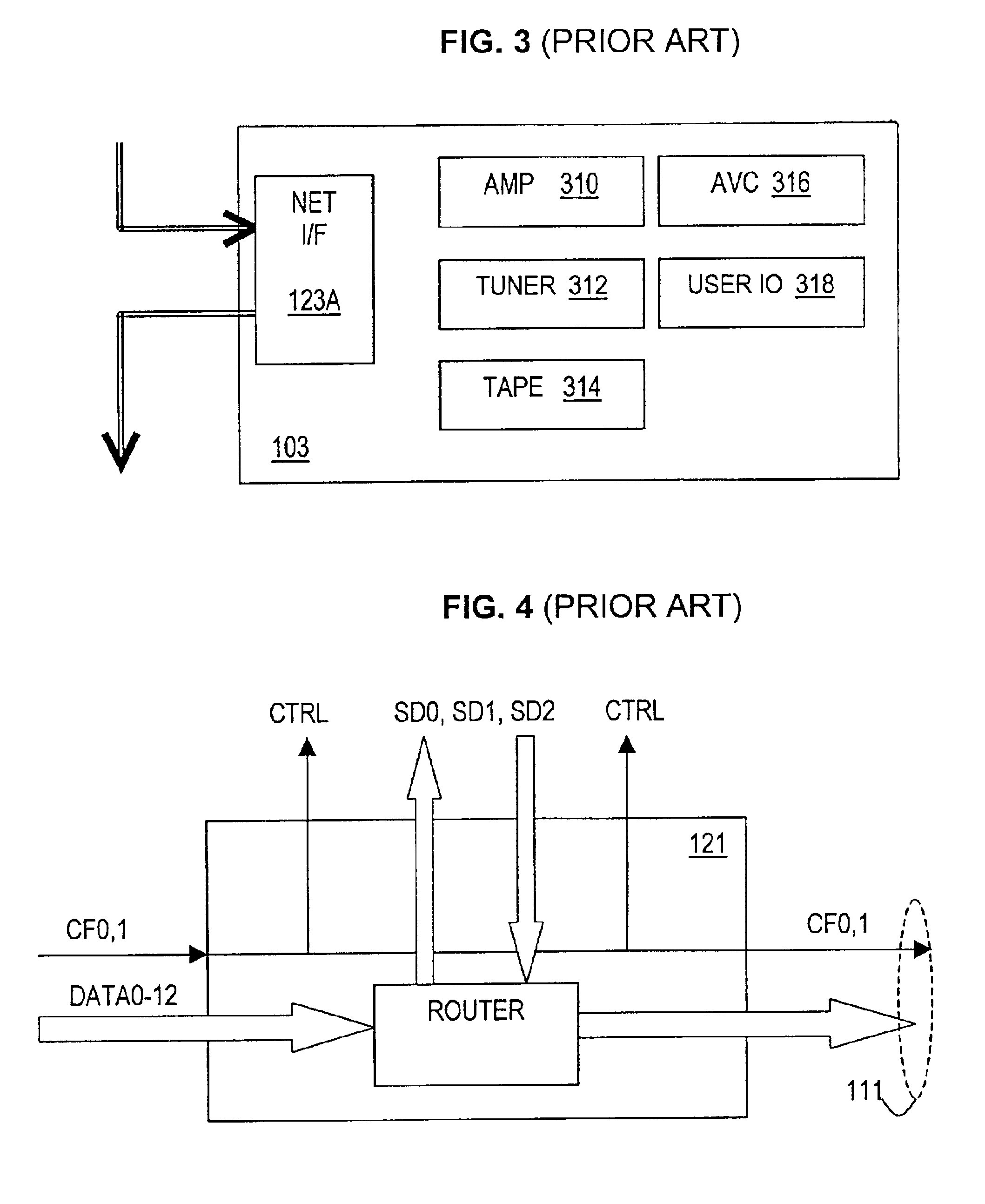Local communication system
a communication system and local communication technology, applied in transmission, hybrid switching system, time-division multiplexing selection, etc., can solve the problems of reducing the smoothness of each connection, bringing certain overheads, and increasing buffering requirements
- Summary
- Abstract
- Description
- Claims
- Application Information
AI Technical Summary
Benefits of technology
Problems solved by technology
Method used
Image
Examples
— example ii
High Speed Network—Example II
FIGS. 31 and 32 illustrate the block and frame structure of a second High Speed (HS) Network example. This provides both variable and fixed rate channels, but with flexible allocation of bytes within a common source data channel. Notable changes and new features relative to Example I above are explained as follows and new features:
The delay at each network node in processing each frame of Example I is greater than 1 subframe when using a network containing both Single Speed and High Speed network nodes. While this is not a problem in principle, it does not provide. Compatibility with the known D2B Optical network, which can only handle a maximum of one sub-frame delay around the ring. One possible solution to this is adopted in Example II, so that the maximum delay is 12 High Speed bits (=3 D2B Optical bits). Therefore, the constraint of one frame delay can be met up to a theoretical limit of 20 nodes. After accounting for typical processing delays throu...
example iii
also provides more detail of the control of variable with channel allocation, and a pocket structure for data within the variable rate channels.
Although the variable width channels and the fixed rate channels are again allocated within a single source data field from different ends, in this Example the variable with traffic is allocated in the source bytes from the beginning of the frame, not the end. At the start of each block of 48 frames, variable width block (VCB) headers are provided which indicate a channel ID and channel width which are fixed for the remainder of that block. The header for successive channels is found by counting through the source data bytes of the first frame in accordance with the width of each channel. The fixed rate data channels are allocated from the end of the source data field.
Packets carrying 42 bytes of source data in this example can also be grouped into packs of up to 256 packets. This can assist data handling in applications where larger segment...
example application
The example system shown in FIG. 33 consisting of a DVD server acting as a source for 4 different video signals could make use of the source data field structure shown in FIG. 51. The bit rate allocation may be varied for each connection by varying the number of bytes allocated to the Variable Connection in each source data block (the width of the variable connection). Note again that since the destinations for the video signals are distributed around the system, not all variable-rate connections need to be present in all links in the system. For example, the variable-rate connection carry the video signal to Screen 1 (video 1) needs only to be present in the link from the DVD server to Screen 1. Each of the variable-rate connections could have a starting width of e.g. 24 bytes (per frame) and then could be varied individually as required by the rate of consumption in the MPEG decoder in each screen.
Variable Rate Flow Control Mechanism
While a source device directly controls the rate...
PUM
 Login to View More
Login to View More Abstract
Description
Claims
Application Information
 Login to View More
Login to View More - R&D
- Intellectual Property
- Life Sciences
- Materials
- Tech Scout
- Unparalleled Data Quality
- Higher Quality Content
- 60% Fewer Hallucinations
Browse by: Latest US Patents, China's latest patents, Technical Efficacy Thesaurus, Application Domain, Technology Topic, Popular Technical Reports.
© 2025 PatSnap. All rights reserved.Legal|Privacy policy|Modern Slavery Act Transparency Statement|Sitemap|About US| Contact US: help@patsnap.com



